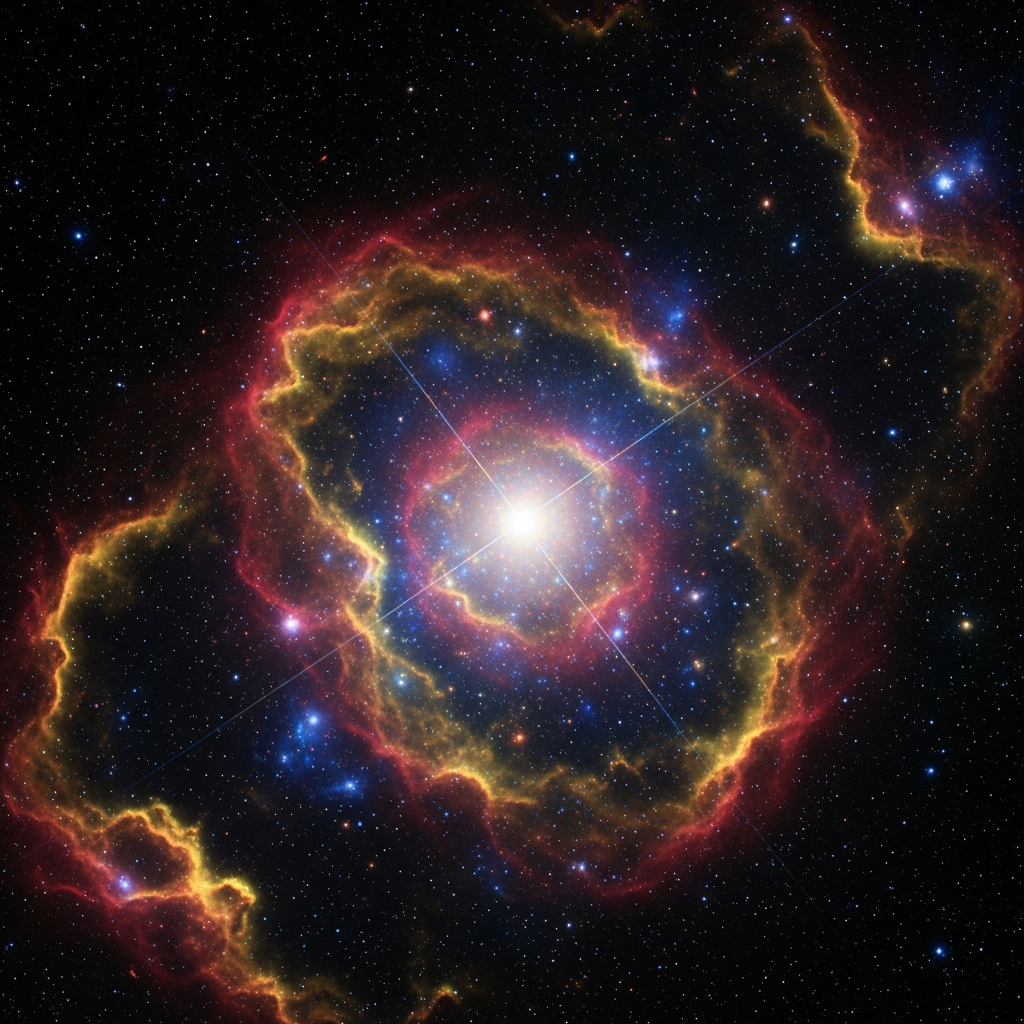Unveiling the Sculptor Galaxy in Unprecedented Color and Detail
Astronomers have captured what’s being hailed as the most colorful and intricate image ever taken of a galaxy. This breathtaking cosmic portrait reveals the nearby Sculptor galaxy (also known as NGC 253 or Caldwell 65) in thousands of distinct hues, illuminating features previously hidden and offering profound insights into galactic life cycles.
Located approximately 11 million light-years away, the Sculptor galaxy is a sprawling spiral galaxy known for its intense star formation activity – earning it the classification of a “starburst galaxy.” Its relative proximity makes it an ideal subject for detailed study, a “sweet spot” that allows scientists to resolve its internal structures with remarkable clarity while still observing it as a complete system.
A Cosmic Prism: How the Image Was Captured
This extraordinary image was created using the European Southern Observatory’s (ESO) Very Large Telescope (VLT) in Chile, specifically employing the Multi Unit Spectroscopic Explorer (MUSE) instrument. MUSE acts like a cosmic prism, splitting the light from the galaxy into thousands of different wavelengths – far more than typically seen in astronomical images. Observing across this wide spectrum, from ultraviolet to near-infrared, allows astronomers to map not just the location of stars, gas, and dust, but also their chemical composition, temperature, and motion.
Gathering this wealth of data required a substantial effort: the VLT stared at the Sculptor galaxy for over 50 hours. More than 100 individual exposures were then stitched together and overlaid onto a map of the galaxy’s already formed stars to produce the final, stunning image. The resulting dataset is immense, essentially providing a “thousand-color snapshot” for every pixel, revealing intricate details as small as a few light-years across.
What Thousands of Colors Reveal
Unlike standard galaxy images that might use only a few color filters, this multispectral view assigns a specific color to each wavelength range. This allows astronomers to pinpoint the location and distribution of different elements and processes within the galaxy:
Hydrogen, Nitrogen, Sulfur, and Oxygen: Specific colors highlight the presence of these key elements within the gas and dust.
Pink Light: Found spread throughout the image, this signifies ionized hydrogen in active star-forming regions. This gas is heated and excited by intense radiation streaming from newborn stars.
White Cone: A prominent feature at the galaxy’s core, this indicates a powerful outflow of gas originating from the supermassive black hole residing at the galactic center.
This detailed chromatic map allows researchers to “zoom in” and study individual star-forming regions at nearly the scale of single stars, while simultaneously “zooming out” to analyze the galaxy’s dynamics as a whole entity. As one researcher noted, this is like seeing the galaxy’s heartbeat, with every pixel providing information on ongoing processes like stellar winds and chemical enrichment.
Significant Discoveries Uncovered
Initial analysis of this rich dataset has already yielded remarkable findings. Astronomers successfully identified 500 planetary nebulae within the Sculptor galaxy. These glowing shells of ionized gas are cast off by dying stars, similar to our Sun, in their final stages. The discovery of such a high number is particularly significant, as typically fewer than 100 planetary nebulae are detected in galaxies located beyond our immediate galactic neighborhood. These nebulae are valuable tools, helping astronomers accurately verify the distance to the galaxy.
The Journey of Gas and Future Research
The team is just beginning to unlock the secrets held within this massive dataset. A primary focus for future research will be tracing the intricate journey of gas within the Sculptor galaxy – how it flows, changes composition, and ultimately contributes to the formation of new stars across the vast structure.
Understanding how these seemingly small-scale processes like gas dynamics and star formation can have such a profound and large-scale impact on a galaxy thousands of times bigger remains a compelling mystery in astrophysics. This unparalleled view of the Sculptor galaxy provides a crucial blueprint for understanding how galaxies like our own Milky Way came to be and how they evolve over cosmic time.
The detailed findings from this study were published in the journal Astronomy & Astrophysics*. The public availability of this extensive dataset promises to fuel years of future research, advancing our understanding of galactic evolution and the cosmos around us.




